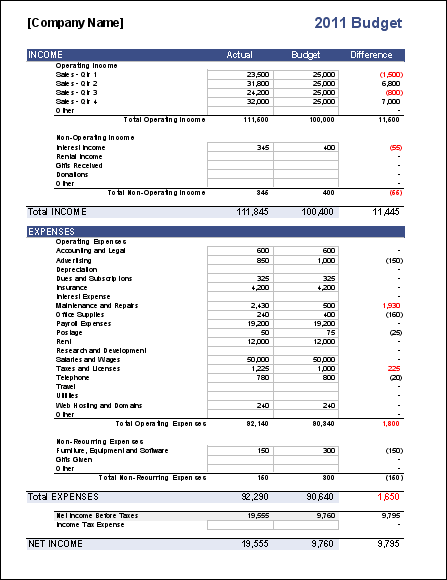Effective business expenditure management is one of the important pillars that help maintain the stability and growth of that business. Without strict control of expenses, businesses can easily fall into a state of cash shortage, reduced profits and even bankruptcy. This article will provide a comprehensive six-step roadmap to manage business spending more effectively in 2024 and beyond.
Enterprise spend management: Definition and importance
Enterprise expenditure management is the process of planning, monitoring and controlling all enterprise expenditures, including production costs, management costs and sales costs. Effective spending management can help businesses optimize resources, improve profits, enhance competitiveness and achieve long-term business goals.
-

Business expenditure management is the process of planning, monitoring and controlling all business expenditures
Business spend management activities include budgeting, cost forecasting, spending tracking, and cost control.
Effective business spend management is important for many reasons. First, it helps businesses control cash flow and ensures that the business has enough money to operate. Second, it helps businesses identify areas where they can save costs and increase profits. Third, it helps businesses plan for the future and make informed decisions about investments.
Six steps to manage business spending more effectively
Step 1: Determine goals and create a budget
The first step in managing business spending is identifying goals and setting a budget. A budget is a financial plan that outlines a business's projected income and expenditures over a certain period of time, usually a year. When setting a budget, businesses need to consider a list of major spending categories such as material costs, labor costs, office rental costs, and marketing costs.
This budget plan should be created based on business goals, demand forecasts, and external factors affecting business operations.
-

A budget is a financial plan that outlines a business's projected income and expenditures
Focus on key spending categories
Businesses should focus on key spending categories, which account for the largest proportion of total costs. By identifying key spending areas, businesses can prioritize these areas to optimize costs without impacting business operations.
For example, if material costs account for 30% of total costs, the business may consider negotiating more affordable contracts with suppliers or finding alternative material options at lower prices.
Step 2: Track spending
After making a spending plan, businesses need to closely monitor actual expenditures compared to planned expenditures. This tracking process can be done through spreadsheets, expense tracking software, or a business accounting system. Businesses need to track all expenses, from the smallest to the largest. Regularly tracking spending allows businesses to identify fluctuations, detect unnecessary spending, and quickly adjust spending plans when necessary.
Take advantage of automation technology
Businesses can leverage automation technologies, such as spend management software, to track spending more effectively. This software can automate tasks such as collecting invoices, recording expenses, and generating expense reports, saving time and improving accuracy.
Step 3: Control spending
The next step in the expense management process is to strictly control expenses. This may involve establishing procurement policies, pre-approving large expenditures, and negotiating with suppliers for better prices. Effective spending control prevents unnecessary and unauthorized spending, helping businesses stay on budget and achieve financial goals.
-

Effective spending control prevents unnecessary and unauthorized spending
Establish approval process
Businesses should establish pre-approval thresholds for large expenditures. These thresholds define the value threshold at which expenditures must be approved by senior managers or management. This helps ensure that major expenditures are carefully considered and aligned with your business goals.
Step 4: Analyze spending
Spend analysis is an important step in identifying opportunities for improvement in the spend management process. Businesses should analyze differences between actual and budgeted expenditures. This will help you identify areas where you are overspending and areas where you can save money. Businesses should analyze variances on a regular basis, such as monthly or quarterly.
By analyzing spend data, businesses can identify spending trends, identify areas of waste, and find ways to reduce costs without impacting business operations.
Use analytical tools
Businesses can use analytics tools to analyze spending data and create detailed reports. This report can include key metrics such as average costs by category, spend comparisons over time, and time spent on budget by department. By understanding spending patterns, businesses can make informed decisions to optimize costs.
Step 5: Negotiate and negotiate
Negotiating and bargaining with suppliers is an effective strategy to reduce business spending. By negotiating more favorable prices, payment terms and contract terms, businesses can achieve significant cost savings. Successful negotiations require careful preparation, market research and the ability to persuade.
Collect comparative data
Before negotiating with a supplier, businesses should collect comparative data on prices, quality and terms of other suppliers. This helps businesses clearly understand their negotiating position and make more reasonable proposals.
Step 6: Continuous improvement
Managing corporate spend must be a process of continuous improvement. Businesses should regularly evaluate current spend processes, identify areas that can be improved, and make changes to optimize costs. By adopting a proactive spend management approach, businesses can ensure that they are using their resources most effectively and achieving their financial goals.
Automate the expense management process
Businesses can automate the expense management process by using expense management software. This software can help businesses create budgets, track actual expenses, analyze discrepancies, and take corrective measures. Automating the expense management process can help businesses save time and money.
-

Businesses can automate the expense management process by using expense management software
Conclude
Effective corporate spend management is critical to ensuring financial sustainability and overall business success. The 2024 spend management strategy will help businesses stay ahead of the curve and achieve financial success.
By taking the six steps outlined in this article, businesses can control their spending, identify areas for potential cost savings, and make informed decisions about investments. In today's volatile economic context, businesses need to focus more on effective spending management to ensure future success.
Bizzi Expense application helps CEOs IMMEDIATELY have "weapons" to help businesses tightly control costs
- GET tools NOW BUDGET PLANNING efficiency, cost optimization: Accurately forecast financial needs for all business activities, estimate business results, labor costs, raw materials, salary fund... to plan budget and implementation. Currently optimizing costs. At the same time, it serves as a basis for monitoring actual performance to make adjustments.
- AVAILABLE NOW system CASH FLOW CONTROL, strictly manage every smallest expense: the CEO can immediately closely monitor and distribute all funds based on budget, estimates, and actual expenses.
- THE method IS NOW available CAREFULLY COST ANALYSIS: The system automatically synthesizes comprehensive cost reports for each period from all aspects, according to indicators, comparing the most recent periods to understand trends and make accurate financial forecasts and decisions.
- AVAILABLE NOW system STRATEGIC INTERNAL MANAGEMENT: Helps review and update all internal business activities continuously and quickly according to day/month/quarter/year, by region, product type... The process is digitized and streamlined to help the whole company. The company is easy to use and has a cost management mindset for each employee.
Now, the CEO NO LONGER struggles with financial management but has a solid management system and strong finances to help his business breakthrough!

Monitor Bizzi To quickly receive the latest information:
- Facebook: https://www.facebook.com/bizzivietnam
- Linkedin: https://www.linkedin.com/company/bizzi-vietnam/
- Youtube: https://www.youtube.com/@bizzivietnam





